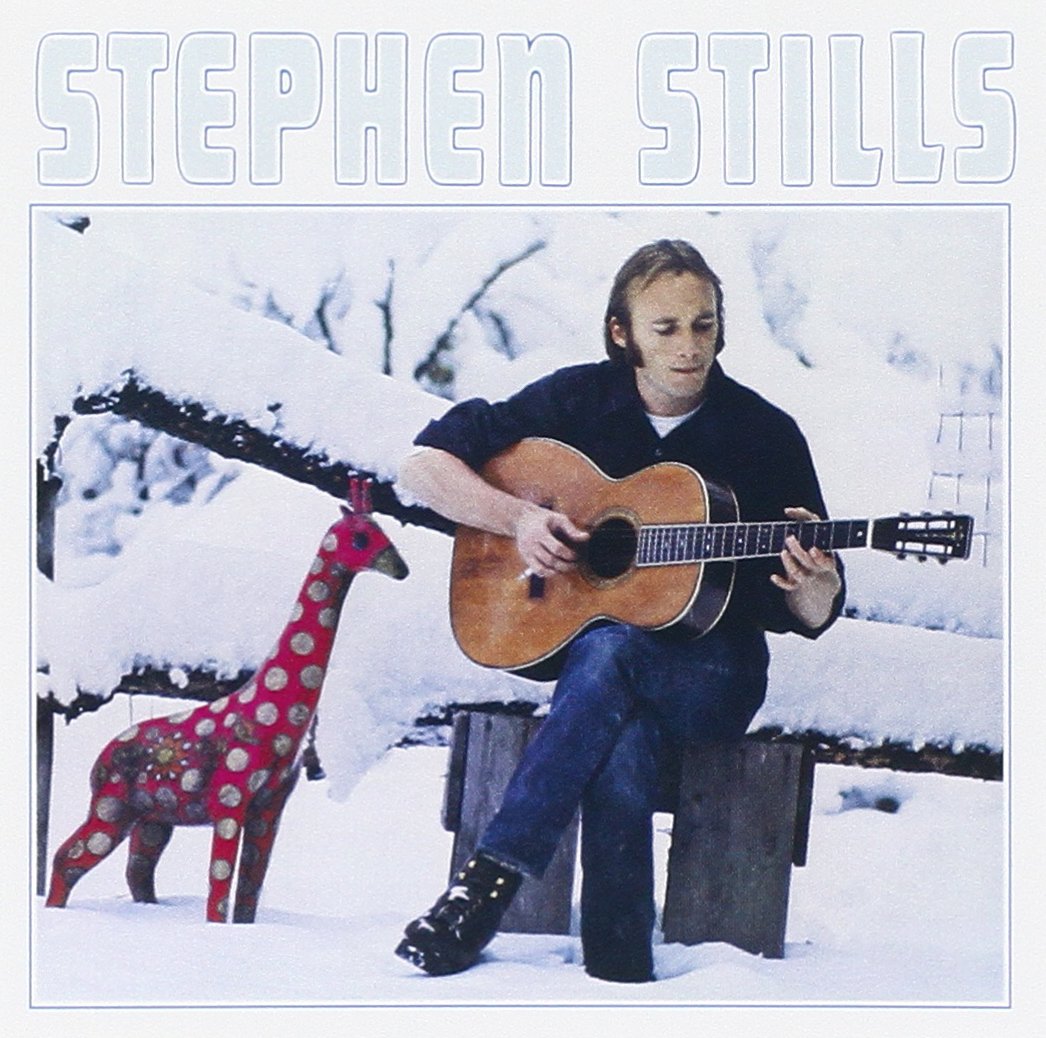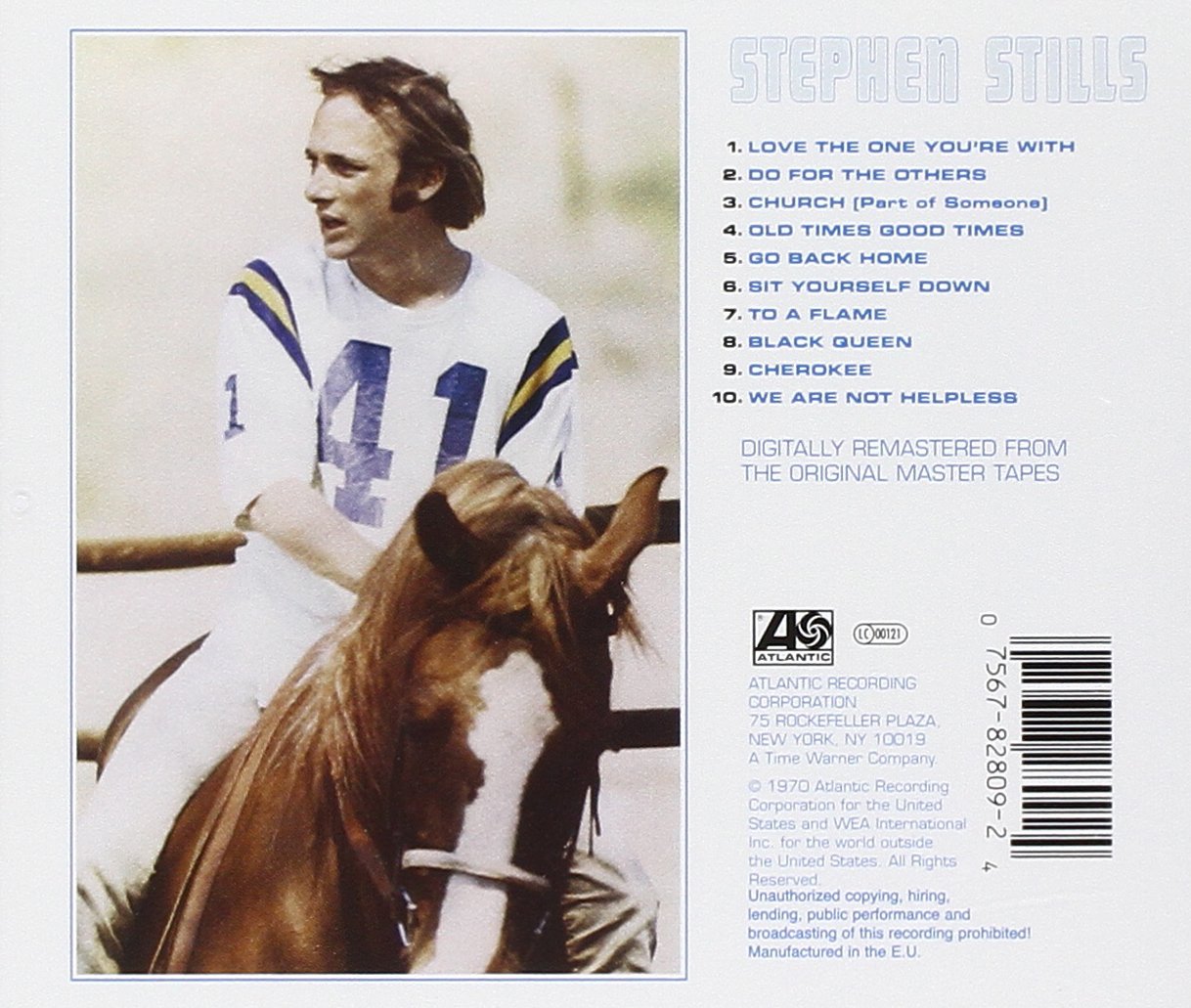Sunday, December 27, 2015
stephen stills
Stephen Stills came into his own with this gospel infused blend of rhythm and blues, latin jazz, and folk rock. He had grown up in a military family living in such diverse places as Florida, Louisiana, Costa Rica, Panama, and El Salvador developing formative musical experiences: "There’s a little piece of [the nighttime Zulu parades in New Orleans the night before Mardi Gras when you were six, being surrounded by salsa music when I was a teenager, and the discovery of old blues music with my best friend] in everything I do. All those blues records that we sat around listening to, we learned to play to Jimmy Reed, which is where everyone should learn to play lead. I found that I had that in common with my British guitar master idols; they all learned to Jimmy Reed, because that was the first thing you could play and it taught you how to keep a groove."
He performed in numerous groups during the 1960's. Stills was a part of three seminal concerts of the decade, playing at the Monterey Pop Festival with Buffalo Springfield, and both Woodstock and Altamont with Crosby, Stills Nash & Young: "I was there [at Woodstock, Monterey and Altamont]. David Crosby and I virtually thought of Monterey. We were just yakking about why not do a festival where they have the jazz festival in Monterey and someone overheard that and all of a sudden it was on and I had to talk myself on to the bill because Neil [Young] had quit the band. It was quite an interesting time, everything moved very very fast."
While he was still with the Buffalo Springfield he appeared on the ‘Super Session’ album with Al Kooper and Mike Bloomfield before forming Crosby, Stills & Nash, which became Crosby, Stills Nash & Young: "The noise that we make when we open our mouths is a gift from God...That was true from the moment it happened in Cass Elliot’s house. I mean, it’s a combination of neurological accidents. I mean, [Graham’s] North of England Celtic thing with my little gravelly whatever the fuck it is and David’s Glenn Yarbrough smoothie sort of California crooner thing that all just sort of worked together instantaneously...When the reality of [the success following CSN and CSNY] hit, I ran like a scalded cat. I went back to the racetrack and started galloping horses, just for something else to do, to get away from all those people who were so obsequious. It was a little teeny version of what The Beatles went through, but it was weird. Everybody was weird. Joni Mitchell wrote a great line about it in “Both Sides Now”…it’s about that moment when you look over and you’re famous and your friends aren’t."
The supergroup splintered as each member focused on solo work. Young went on to record his third solo album After the Gold Rush while the other three put out their debut solo albums on Atlantic Records' "Superstar" series: David Crosby did If I Could Only Remember My Name and Graham Nash came up with Songs For Beginners , but it was Stills' eponymous debut that came first.
'Stephen Stills' was co-produced by Stills and Bill Halverson and engineered by Andy Johns at Island Studios in London. The sessions featured Stephen Stills on vocals, guitars, bass, piano, organ, steel drum, and percussion, as well as horn and string arrangements for "Church," "To a Flame," and "Cherokee"; with Jimi Hendrix on electric guitar for "Old Times Good Times"; Eric Clapton on electric guitar for "Go Back Home"; Booker T. Jones on organ for "Cherokee" and backing vocal for "We Are Not Helpless"; Calvin "Fuzzy" Samuel on bass for "Love the One You're With," "Church," "Old Times Good Times," "Go Back Home," and "Sit Yourself Down"; Conrad Isedor on drums for "Church" and "Old Times Good Times"; Johnny Barbata on drums for "Go Back Home" and "Sit Yourself Down"; Ringo Starr on drums for "To a Flame" and "We Are Not Helpless"; Dallas Taylor on drums for "Cherokee"; Jeff Whittaker on congas for "Love the One You're With" and "Old Times Good Times"; Sidney George on flute and alto saxophone for "Cherokee"; with Rita Coolidge, David Crosby, Priscilla Jones, John Sebastian doing backing vocals on "Love the One You're With," "Go Back Home," "Sit Yourself Down," and "We Are Not Helpless"; Cass Elliott and Claudia Lennear doing backing vocals on "Go Back Home," "Sit Yourself Down," and "We Are Not Helpless"; Graham Nash on backing vocals for "Love the One You're With," "Sit Yourself Down," and "We Are Not Helpless"; Judith Powell, Larry Steele, Liza Strike, Tony Wilson performing backing vocals on "Church"; Sherlie Matthews on backing vocals for "We Are Not Helpless". Arif Mardin did the string arrangements on "Church" and "To a Flame". 'Stephen Stills' was released after Hendrix' death in September of that year, and was dedicated to him.
Still recalls: "It was sheer luck, though some of it was hustling. Hendrix was a wonderfully kind and generous man and he tried to show me lots of things on the guitar. But his hands were the size of an NBA basketball player’s. He’d be like, “See, you can do that.” And I’d be like, “Jimi, put your hand up next to mine.” We had some great times in Ireland just rambling about. I went this one time and we went in to this studio and I said just record everything. So I had a line of tapes the size of that couch but the tragedy is I went back to listen to them and it was just a bunch of people loitering - la la la la la la, clink clink clink. Then Jimi played one song, which was his song, and I gave it to the estate and then there’s another song he played with me. I couldn’t believe we didn’t get more than that, though, but the hangers-on kept showing up and it just never went anywhere. He was quite shy and I think for him being with me was as much about having an American voice to talk to, being a bit of a stranger in a strange land. I always felt very comfortable here and so did he to a point. But at that age in the music business, because this is a small and compact island. it was very competitive and there was a lot of gamesmanship. Sometimes I think he felt a bit like the ball in a ping-pong game. So he’d come and find me and my friend from Louisiana to sit and talk philosophy with and life and so on ... [Some producers] spend a couple of weeks putting [guitar parts] down as overdubs. If you’re me, you can do it all in a day. You know when you start, and you know how long [until] it’s gonna end, and you let it tell you, and your guitar and you become alive. And then you look at the band and say, “We’re coming down now.” As a jazz musician, that’s how you play, that’s how it’s done. It hasn’t changed in a hundred years."
http://www.stephenstills.com/
"Love the One You're With" became his biggest solo hit, going to number fourteen on the US pop chart driving 'Stephen Stills' to number three and a gold certification.
If you're down and confused
And you don't remember who you're talking to
Concentration slips away
Cause you're baby is so far away
Well there's a rose in the fisted glove
And eagle flies with the dove
And if you can't be with the one you love honey
Love the one you're with
Don't be angry - don't be sad
Don't sit crying over good times you've had
There's a girl right next to you
And she's just waiting for something to do
Well there's a rose in the fisted glove
And eagle flies with the dove
And if you can't be with the one you love honey
Love the one you're with
Doo doo doo doo
Doo doo doo doo
Turn your heartache right into joy
Cause she's a girl and you're a boy
Get it together come on make it nice
You ain't gonna need anymore advice
Well there's a rose in the fisted glove
And eagle flies with the dove
And if you can't be with the one you love honey
Love the one you're with
Doo doo doo doo
Doo doo doo doo
'Stephen Stills'
full album:
All songs written and composed by Stephen Stills.
Side one
00:00 "Love the One You're With" 3:04
03:04 "Do for the Others" 2:52
05:58 "Church (Part of Someone)" 4:05
10:04 "Old Times Good Times" 3:39
13:44 "Go Back Home" 5:54
Side two
19:39 "Sit Yourself Down" 3:05
22:46 "To a Flame" 3:08
25:55 "Black Queen" 5:26
31:23 "Cherokee" 3:23
34:46 "We Are Not Helpless" 4:20




No comments:
Post a Comment